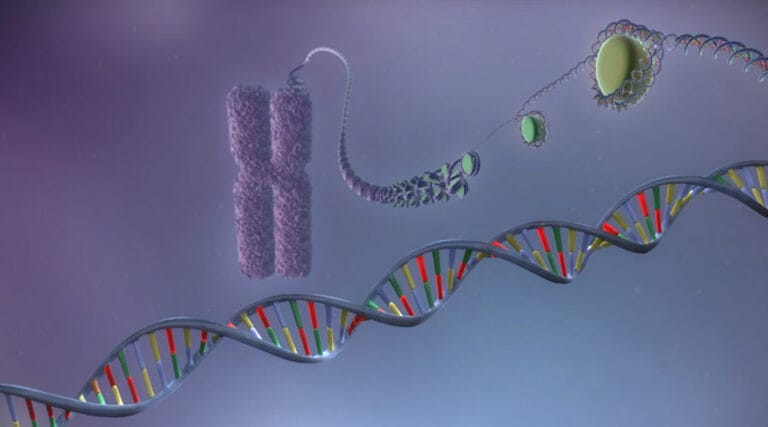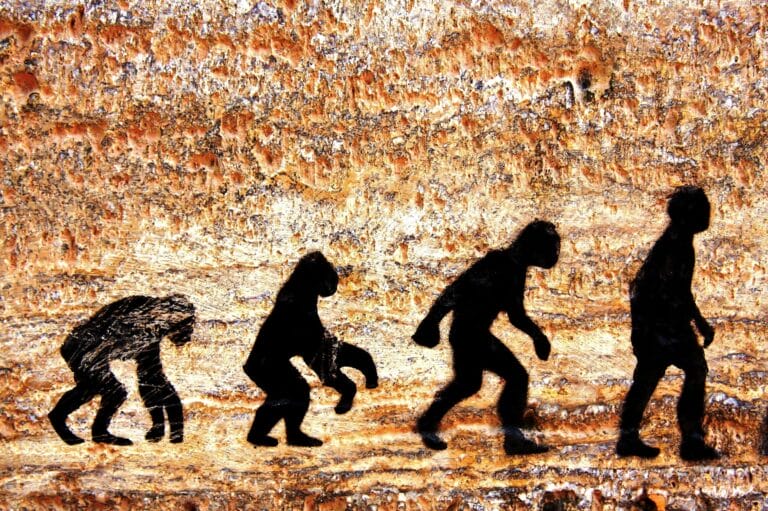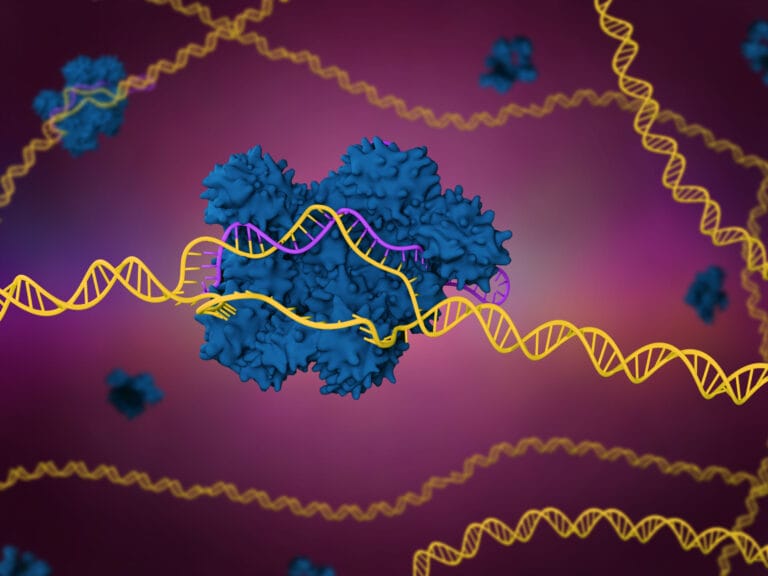Discover more about DNA, genes and genomes
Top results
- Code Crackers
- Tech in the Lab
- Recreate a Face
- Science For Everyone Primary Resources
- Barcoding for beginners
- Genome Generation Express
- Extracting DNA from fruit
- Function Finders
- Function Finders: BLAST!
- Zoom in on DNA
- DNA extraction
- Polymerase Chain Reaction
- Agarose gel electrophoresis
- Career profile: software developer
- Career profile: bioinformatics developer
- Career profile: CASM informatics team leader
- Career profile: data analyst
- Career profile: research software engineer
- Career profile: senior scientific manager
- Career profile: training coordinator
- Career profile: quality officer
- From DNA to protein
- Career profile: postdoctoral scientist (malaria)
- My career in genomics: bioinformatics
- Career profile: postdoctoral research fellow (cancer)
- Genomics Lite: How does DNA mutate?
- Career profile: in-country training assistant
- Career profile: research assistant (cystic fibrosis)
- Career profile: advanced research assistant (pathogens)
- Career profile: recruitment and immigration adviser
- Career profile: senior media officer and social media lead
- Mastering micropipetting
- Data Centre Alarm
- Career profile: schools engagement officer
- Career profile: staff scientist
- Career profile: postdoctoral research scientist (ecology)
- Career profile: postdoctoral research fellow (diseases)
- Career profile: advanced research assistant (malaria)
- Career profile: engagement officer
- My career in genomics: management trainee
- What is mitosis?
- My career in genomics: product manager
- What is meiosis?
- My career in genomics: illustrator and graphic designer
- Mitosis versus meiosis
- My career in genomics: scientific communications
- My career in genomics: compliance manager
- My career in genomics: learning and development lead
- My career in genomics: conservation genetics
- What is a cell?
- What is DNA?
- My career in genomics: data science
- What is a gene?
- My career in genomics: cellular operations
- What is a chromosome?
- My career in genomics: cell biology
- What is a genome?
- My career in genomics: genetic counselling
- What is RNA?
- What is genetic counselling?
- How is DNA turned into protein? The Central Dogma of Molecular Biology
- What is a mutation?
- What is inheritance?
- My career in genomics: cancer biology
- My career in genomics: immune diseases
- What is a genetic condition?
- My career in genomics: evolution
- What is genetic testing?
- My career in genomics: antibiotic resistance
- What are infectious diseases?
- What is DNA sequencing?
- Life in the Lab: working in DNA sequencing pipeline
- What is genome editing?
- Life in the Lab: working with human gut microbiota
- The Human Genome Project
- Life in the Lab: working in a malaria lab
- Sharing Your DNA: What People Think Around the World
- Exploring DNA Like a Game of "Genetic Musical Chairs"
- Timeline: History of Genomics
- Life in the Lab: working in a malaria genome modification pipeline
- What is a chromosome condition?
- The discovery of DNA: the molecule of life
- What is gene expression?
- Evolution of modern humans
- What are helminths?
- What is selective breeding?
- Genomics Lite: How many cells do I have?
- What is gel electrophoresis?
- What happens in DNA replication?
- What is evolution?
- Origami DNA
- What is PCR (polymerase chain reaction)?
- What is CRISPR-Cas9?
- Genomics Lite: How do cells grow?
- Giants in genomics: John Sulston
- Giants in genomics: James Watson
- Sequencing at speed
- DNA sequencing
- Career profile: research governance manager
- What is Sanger Sequencing?
- What is Oxford Nanopore Technologies (ONT) sequencing?
- Using artificial intelligence for genomic research
- DNA to Data
- Whose Poo?
- Our Animal DNA
- Is cancer a genetic disease?
- Handshake Hazard
- Contamination Detectives
- Yummy Gummy DNA
- Classify!
- Wellcome Sanger Institute Virtual Work Experience
- Wild DNA
- Genomics Lite: Why trust science?
- Genomics Lite: What is the microbiome?
- Model organisms: the clawed frog
- Unsung heroes in science: Marie Maynard Daly
- What are dominant and recessive alleles?
- The discovery of DNA: the first building blocks
- The discovery of DNA: unravelling the double helix
- Are humans still evolving?
- Evolution of the human brain
- What is a GMO?
- What is a telomere?
- Genomics Lite: What is gene expression?
- Genomics Lite: What is antimicrobial resistance?
- Genomics Lite: How is river water helping to track disease?
- Giants in genomics: Janet Thornton
- Genomic conversations: animals in biomedical research
- Genomic conversations: whole genome sequencing of babies from birth
- Genomic conversations: direct-to-consumer genetic testing
- Genomic conversations: genetically editing animals for agriculture
- Genomic conversations: animals in conservation and biodiversity research
- Genomics Lite: How do species evolve?
- Genomics Lite: Why are some genes dominant?
- Cell Snap
- Sneeze Zone
- Career profile: senior technical specialist (histology)
- Construct a Bug
- Post-sequencing: storing and sharing sequenced genomes
- Post-sequencing: sequence comparisons
- Post-sequencing: sequence annotation
- Post-sequencing: putting the sequence back together
- Post-sequencing: quality control
- What is malaria?
- What is a clinical trial?
- What is cystic fibrosis?
- What is Huntington’s disease?
- Malaria: the search for a vaccine
- Applications of gene therapy
- What is personalised medicine?
- Types of genome edits
- Microbe Maker
- BRAF: From Gene to Cancer Therapy
- Genome Challenge
- Model organisms: the fruit fly
- Genomics Lite: Whose genome was sequenced first?
- Genomics Lite: How is AI used in bioscience?
- When was the Human Genome Project completed?
- Investigate!
- Build a Bacteria!
- Genomics Lite: What's the biggest genome?
- Career profile: research governance assistant
- Genomics Lite: Ancient DNA - Excavating fact from fiction!
- How do you map a genome?
- What is genome mapping?
- What is African sleeping sickness?
- What is gene therapy?
- How do we use CRISPR gene editing to study diseases?
- What is DNA profiling?
- What are BAC libraries?
- What is clone-by-clone sequencing?
- The evolution of genome editing tools
- How is genomics being used to tackle schistosomiasis?
- What is schistosomiasis?
- C elegans: the early worm gets the sequence
- What is RNA sequencing?
- What are Streptococcal infections?
- What DNA is profiling used for?
- What is dementia?
- Model organisms: the mouse
- What is phylogenetics?
- What is capillary sequencing?
- What is third generation sequencing?
- What is PacBio SMRT sequencing?
- What is next generation sequencing?
- What is familial adenomatous polyposis?
- How are drugs designed and developed?
- Covid-19 variants and genomic surveillance
- What is Covid-19?
- What are model organisms?
- What is pharmacogenomics?
- Timeline: the Human Genome Project
- The UK National DNA Database
- What is colorectal cancer?
- What is hereditary haemochromatosis?
- What is hereditary non-polyposis colorectal cancer?
- What is sickle cell anaemia?
- What is Alzheimer’s disease?
- What is Down’s syndrome?
- What is achondroplasia?
- Giants in genomics: Mike Stratton
- Different types of mutations
- DNA replication
- What is genetic variation?
- Treating the bubble babies: gene therapy in use
- What are Staphylococcal infections?
- What are haemophilia A & B?
- What is muscular dystrophy?
- What is Fragile-X syndrome?
- What is genetic engineering?
- Timeline: how has the Human Genome Project been used?
- Genomic surveillance in action
- Giants in genomics: Jennifer Doudna
- How inbreeding mice led to lifesaving treatments
- The Human Genome Project: Personal Stories
- What is a stem cell?
- How are stem cells used in research and medicine?
- Model organisms: the zebrafish
- Sequencing Bracelets
- Genome-wide association studies
- What was the Human Genome Project for?
- How did the Human Genome Project come about?
- What was sequencing like before the Human Genome Project?
- Who was involved in the Human Genome Project?
- The pilot project for the Human Genome Project: sequencing C. elegans
- How did patenting cause conflicts within the Human Genome Project?
- How did the Human Genome Project make science more accessible?
- Why was there a race to sequence the human genome?
- What was the ‘draft sequence’ of the Human Genome Project?
- Timeline: Organisms that have had their genomes sequenced
- Science in the time of cholera
- What is antibiotic resistance?
- Using genomic surveillance to track MRSA 'superbugs'
- Pharmacogenomics and cancer
- How is pharmacogenomics being used beyond cancer?
- What is HIV?
- What is RNA splicing?
- What is bioinformatics and how do we use it?
- Adverse drug reactions
- What are single gene disorders?
- What is Salmonella?
- What is tuberculosis?
- What is Genomic Surveillance?
- Model organisms: the nematode worm
- Model organisms: yeast
- Unsung heroes in science: Henrietta Lacks
- Unsung heroes in science: Barbara McClintock
- Unsung heroes in science: Margaret Hamilton
- Giants in genomics: Rosalind Franklin
- How is malaria treated and prevented?
- Giants in genomics: Maurice Wilkins
- Giants in genomics: Fred Sanger
- Giants in genomics: Eric Lander
- Giants in genomics: Allan Bradley
- Giants in genomics: Francis Collins
- Giants in genomics: Francis Crick
- Giants in genomics: Robert Waterston
- Fruit flies in the laboratory
- Tiny fish, big splash: the story of the zebrafish
- Leaps forward: lessons learned from the clawed frog
- Personal genomics: the future of healthcare?
- Using phylogenetics to track disease outbreaks
- The dawn of DNA profiling: the ‘eureka’ moment that revolutionised crime solving
- What is a complex disease?
- How is genomics being used to tackle leishmania?
- How is genomics being used to tackle Guinea worm disease?
- Genomics Lite: Drug targets to validation
- Genomics Lite: Exploring genome function
- Genomics Lite: What is a gene?
- Types of genome sequencing
- Using genomics to understand malaria
- What was the 454 method of DNA sequencing?
- What is shotgun sequencing?
- Genomics Lite: Genetic alchemy
- How is genomics being used to tackle neglected tropical diseases?
- Genomics Lite: Genomic cartography - Generating a human cell atlas
- Genomics Lite: Genomic cartography - Navigating with a human cell atlas
- What is the Illumina method of DNA sequencing?
- Timeline: the past, present and future of sequencing technologies
- Malaria: an ongoing battle against drug-resistance


